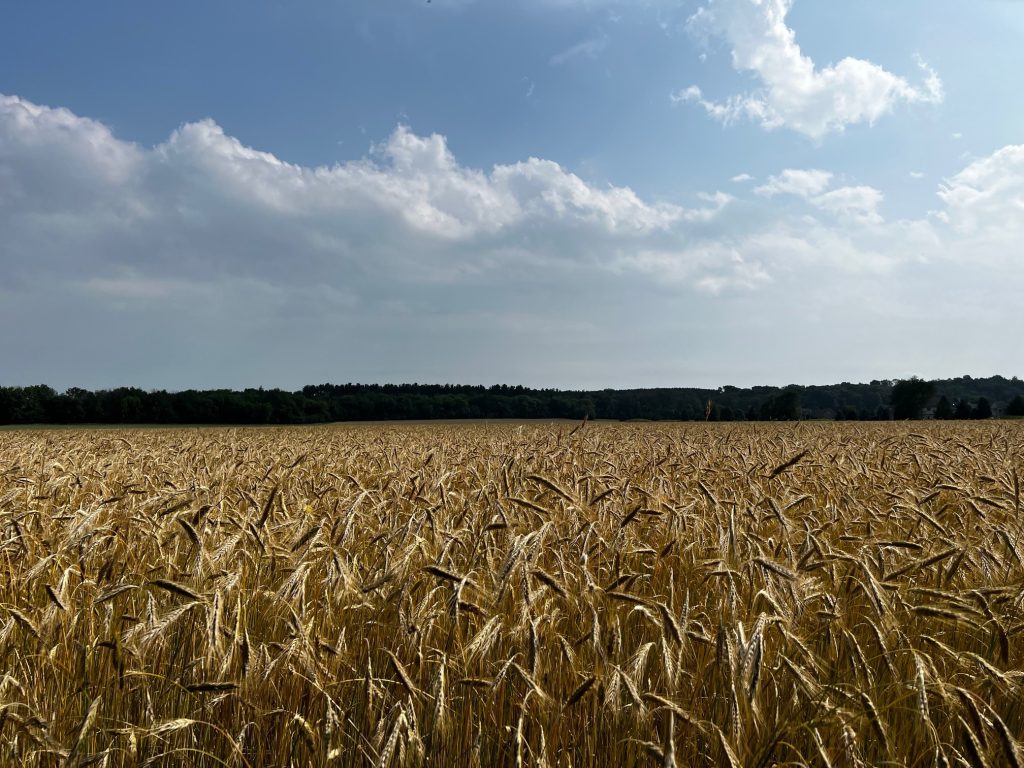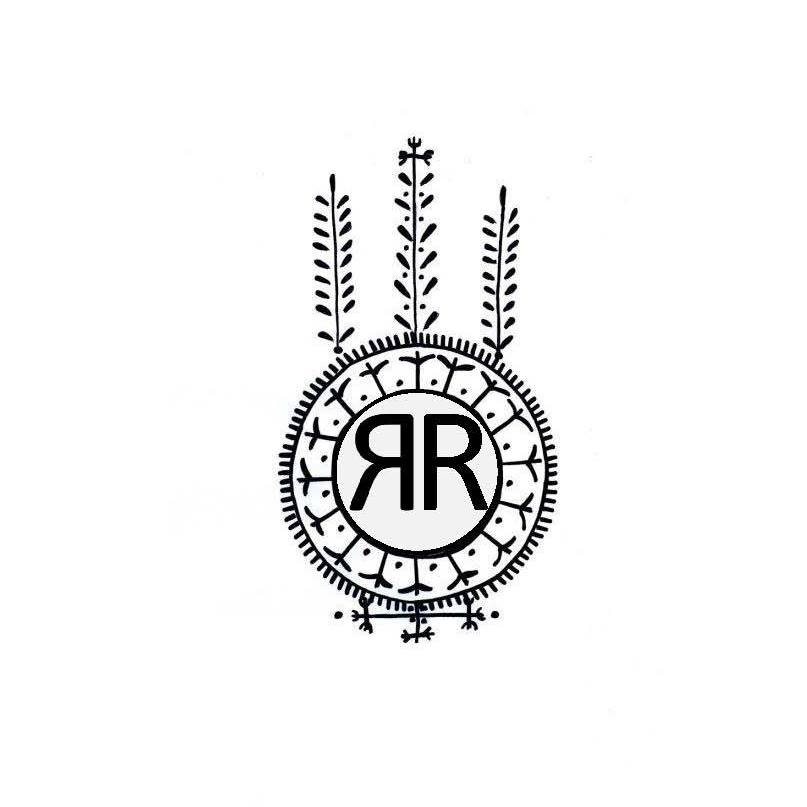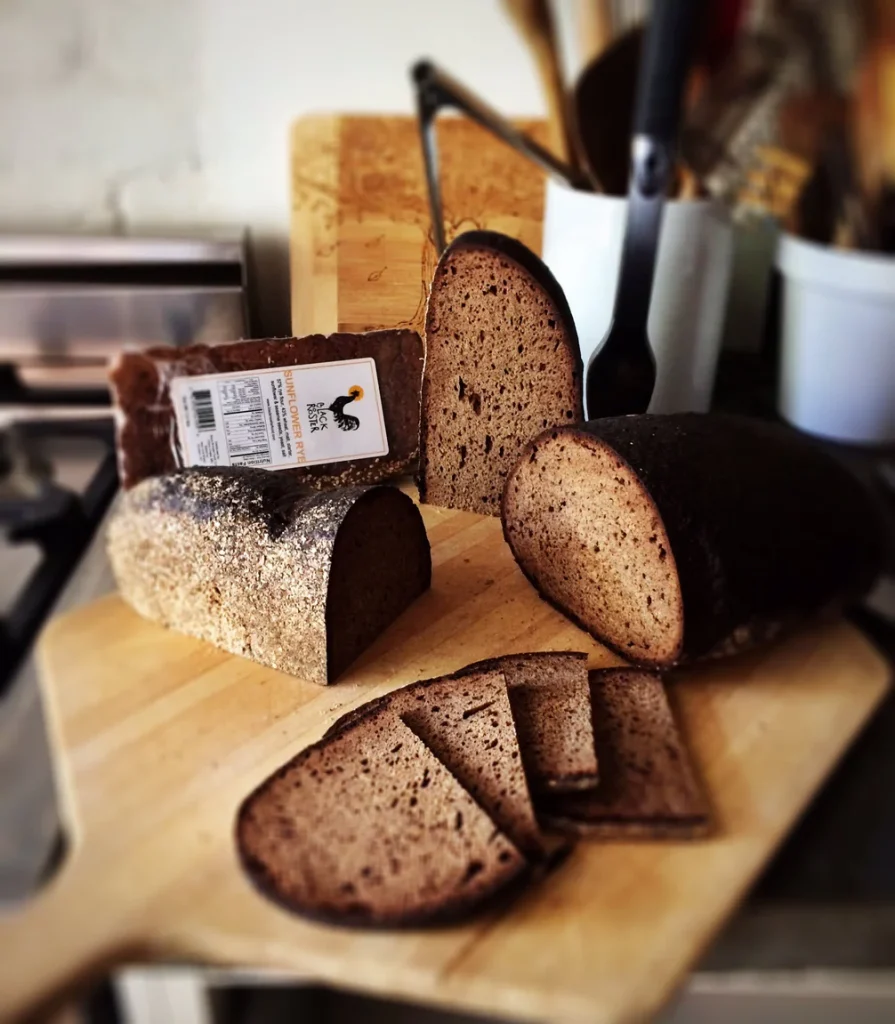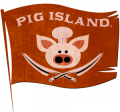This unique and special grain has a long history in the US that Avery Robinson and his colleagues at Rye Revival are working diligently to bring back into the public consciousness and palate. If you’ve ever wondered why rye fell out of public popularity, or how you can help nourish the future with your favorite local whiskey, read on.

Food Karma: Tell me about yourself: what drew you to working with grains?
Avery Robinson: When I was an undergrad, I studied food systems, sustainable food systems, and sustainable urban planning. And so that was the start of me really getting into food and thinking about it more systemically. I continued that into grad school work where I studied culinary history, specifically Jewish and American culinary history. And so since since my time in academia, I’ve often have this framing and thinking about food, both from a historical lens, but also in tangible terms: in where is my food coming from, what is its impact on the environment, what is the impact on the people who are producing it and consuming it, and where does waste go? And so, since the early aughts and teens, that’s really what I’ve been thinking about and how I approach the world.
FK: What was your journey to the Rye Revival?
AR: In 2019, I met Rita Hinden, who is the formal thought founder of Rye Revival, and she has been bringing people together over ride for the past decade or so. I met her at a Jewish Sustainable food conference, and she was there talking about rye and its cultural legacy within European Jewish immigrants, so Ashkenazi Jews. That really spoke to me because of my culinary history background. But then as she was telling me more about rye, I was like, oh! Obviously rye is such an amazing grain! And then a year later, we were in the pandemic and, you know, people were feeling rather entrepreneurial. So with Rita and a few farmers and other grain activists like June Russell, we formalized this into Rye Revival.
It was a long time coming and it may have happened without the pandemic, but this was a great opportunity to get people together, especially around Zoom and else and otherwise. These conversations that have been going on for a while really needed to have a genesis into something real. And also, for us who were stuck and feeling like we could we couldn’t be doing anything because of the pandemic to get out of that space us into something that we thought could really make a difference on climate change.
FK: Can you tell us about what Rye Revival is?
AR: Rye Revival is promoting the ecological production, rye as a climate change mitigation strategy. And so however we can get the word out about that, we do that.
I recently came from a Grain School event that was being hosted by Cornell Cooperative Extension Extension with June Russell and Glynwood and a few other partners. And, you know, people were they were very excited about Rye. There’s a lot of interesting discussions with maltsters and thinking about end-market users of breweries and bakeries and distilleries. Additionally, there were discussions about getting farmers excited about growing this grain and thinking of there being a market for it; A market that has historically been neglected for the past 50 odd years because rye is no longer traded as a commodity. It was dropped by the Chicago Board of Trade in the 1970s. And so with that, you know, there’s it’s very rare for farmers to get insurance for their rye crop. There’s no subsidies for rye like there are others. And so Rye Revival was trying to level the playing field a little bit, and also help farmers recognize the agricultural benefits that rye offers to their farms. Thinking of rye not just as a profit-driven crop, but something that can actually regenerate their soils.
Rye Revival is working to educate farmers and support the growth of increased growth of rye and new growth of an American farms and farms throughout the world. Although right now we’re focusing principally on America because that’s where we have the most connections.

FK: What caused rye to be dropped from the Chicago Board of Trade?
Rye was not being grown as much in the 1970s… So Rye was a very big grain product in the United States during the colonial period, and then up until Prohibition. And Prohibition really changed the markets for rye, because a lot of rye at that point was going to whiskey. But also the agricultural Green Revolution really radically changed the the American farming landscape. So that was with the massive changes in wheat corn, and soy production, which became much larger in commodities. And because the palate for food was changing in the United States and also around much of the globalized market there, the United States, with its production of commodity wheat, enabled there to be much more wheat bread that is delicious, and products made out of wheat, whether that is pizza and pasta or certain crackers. People love wheat. It’s soft, it’s sweet, it’s delicious. The gluten develops, and it’s so much easier to work with. For home bakers as well, there’s a reason that you’ve probably never heard of anyone making a rye cake or, you know, a rye pizza… It’s just stubborn.
So tastes changed. After Prohibition, there was a shift to having more neutral-flavored clear liquors. And so rye also fell off the wagon there. The market for rye bread and also for rye whiskey or rye liquor really changed, and concomitantly there is also a shift in the amount of subsidized and inexpensive corn and soy that was available for animal feed. So farmers were and ranchers were less interested in providing that for their for their pigs and cows. Rye is still a common animal feed in Europe, but not so much in the United States. And, you know, a lot of that has to do with certain ag. policies that have shifted that away.
FK: What about the farmers in more modern times? Are they receiving subsidies for growing rye?
Farmers who are growing rye are not subsidized to grow rye, they’re growing it because they recognize its impact and value on their own farmland, and are hoping for a market. Many farmers who grow corn and soy are doing it purely to just make money on that. And even if they don’t get a crop, they have insurance. That’s not the case with Rye. The insurance that Rye provides is what happens in the soil.
Also, it hasn’t received the love and attention and dollars and the scientific and other research communities. And so a lot of the rye that people are planting and getting is heirloom or landrace varieties. These are varieties that have been around for a long time. The right genes have not really been tampered with or like selected for in the ways that others other plant varieties have. And so there is so much more flavor with right, and there’s so much more depth to the different varieties themselves. And it’s really exciting to be baking with those.
FK: What projects are Rye Revival currently working on?
AR: We’re trying to get more research done on rye to understand, you know, just truly how much carbon rye can take out of the atmosphere with its really robust root systems. Rye has the deepest roots of any annual grain, and it’s also the cold hardiest. Between the fact that it can grow roots that are up to seven feet deep with over 300 feet of root hairs, and the fact that it’s the last thing that you can plant in the winter, it really has a great opportunity in most parts of America- if not across the the temperate world- to really prevent erosion as a winter cover crop. Also, if grown full term, we can really take advantage of its photosynthesis and potential to put carbon underground. We want to measure that, and understand what’s the difference between a farm that’s just cover cropping with your rye versus one that’s growing at full term? What are ways of growing it that can be better for different farming environments, whether that’s in Texas and Oklahoma, Oklahoma, which grows more right than any other state in America or, you know, places in Wisconsin where Rye’s the only thing that farmers can plant after their corn harvest.
We want to expand the scientific literature on rye to better understand [different farming practices], and take our anecdotal evidence and push that into real hard scientific evidence, or to translate scientific evidence from Europe into something that can be seen and recognized here in America. We’re also working with Mad Agriculture, which is an organization out of Boulder, Colorado, to help market rye. So Mad Ag. has worked on Kernza with the Perennial Promise Growers to really find a market for them, and they strongly believe in the power of regenerative agriculture. And so to recognize that Rye is among the best, if not the best annual grain crops that can really make a regenerative impact on and climate resilient impact on farms. [Expanding the scientific literature] is going to help us find markets for consumer packaged goods. So for, you know, breads and crackers and cookies and pasta and beer and distilled goods, whiskeys, gins and vodka, but also, you know, the feed market because that really is what moved the needle.
There’s a couple grant projects underway that June Russel is involved with at the University of Vermont and Wisconsin doing a variety trial testing. There is an increasing amount of excitement towards rye, which the Rye revival, you know, is really trying to champion. We can say there’s a rye revival, there’s a renaissance, there’s enthusiasm for rye, and any time we’re talking about rye, it is a good thing. We need to just be planting more rye and finding more markets for that.
Ultimately, Rye Revival is there to help educate consumers about the benefits of human nutrition, animal nutrition, the environmental impact. That’s one of the reasons that Revival is partnering with the Rye and Cassoulet event. It’s to be there to educate folks not just on how and why rye can be delicious. I think that a lot of the Empire Whiskey and the breads speak for themselves.
To [help people] understand that there’s something more than just that flavor, Revival is working on developing a much more robust program for Rye Week 2023. A few years ago, through the efforts of the Empire Rye Whiskey distilleries, New York State legislators created what’s known as Rye Week, which is generally the third week or so of October. For that week, Rye Revival is going to help promote and create a slate of programing that, you know, educates the public about the great benefits of Rye, and also showcases a lot of producers, farmers and processors of rye and places that highlight that. So that could be bars and bakeries and distilleries, but it could also be like a community food hub in the Hudson Valley.
It’s also interesting that [Rye Revival] is a volunteer project for everyone. We’re trying to develop and formalize roles and get funding so we can really more concretely and seriously do this work.

FK: How do you hope Rye Revival will evolve?
AR: I want Rye Revival to be seen as the go-to resource for rye—for farmers, processors (millers, maltsters, bakers, brewers, and distillers), researchers, and consumers. We are in the early stages of developing a “Rye Resource Room” and more comprehensively laying the groundwork for Rye Revival. This digital space, the Rye Resource Room, will be a source for scientific articles and lay writings on rye as well resources for where people can buy rye flour and other products; the health benefits to people, animals, and the environment; and where people can visit rye farmers, bakeries, and distilleries, or at least see on a map who’s growing rye in different regions to understand that they exist in a world that is adjacent to rye farmland; and because rye is not traded like other commodities, we can remove the cellophane veil behind where people’s grain is coming from so that they can see themselves and their region’s commitment to rye.
Many craft distilleries that are making rye whiskey know exactly who grew their rye. And that’s really exciting! So for the distilleries to market that, which there are a handful of distilleries that do that and in New York, especially with Empire Rye but also there’s a few distilleries in in Michigan and Nevada even that are growing rye that are that are identifying their rye farmers also in Washington and Minnesota. It’s really exciting to see the connections and for the product to be taking pride in their source. I think that’s really, really powerful and for people to recognize that.
To paraphrase Wendell Berry, “drinking is an agricultural act”. And to quote Wendell Berry, “eating is an agricultural act”. So when you’re buying farmer-ground flour at your New York City green market that’s coming from Thor Oechsner’s farm in the Finger Lakes; that is something really powerful. And if you’re not buying that flour, then you’re buying another flour at a grain market or you’re going to She Wolf Bakery, which works with local New York growers and mills. That’s really cool and that’s really powerful to be able to see where your food is coming from.
And so I think that the Resource Room will allow that to happen on a much larger scale. But also, you know, it sort of almost as like a teach a person to fish moment where we provide a little more information than they otherwise would be able to find. But we’re doing so in an accessible format that is accessible for researchers and for consumers. But also if someone is growing rye, or thinking about growing rye, they can look at it as farmers thinking about growing rye, they can look at it and understand just what sort of markets they can find, or how they realize that there’s a bakery near them or there’s a mill near them, or there’s a maltster near them that could be a potential market for their value added grains.
In Europe, at least, it’s shown that you can use significantly fewer antibiotics for pig production. And so especially in Scandinavia, people are feeding rye to pigs. They’re using less antibiotics, and the animals are still healthy and they’re still yielding a lot. It would be great for the American farm system to shift over to that because there’s so much more rye consumers if you think about animals than people at the moment. And that’s going to help us, you know, convert millions of acres of land to putting a little rye on there. Rye can also easily convert and be adapted into a corn soy rotation because it’s an annual grain. It can help farmers who are growing corn and soy maintain their farmland, prevent soil erosion, increase the biodiversity on their farms, and strengthen their local agro ecosystems, while also reducing, [for example], the erosion into the Mississippi Delta and thus creating the dead zone in the Gulf of Mexico. Rye can help all that, and farmers can still grow corn and soy because rye is an annual grain, it can just make that corn and soy better. And because rye is a gateway to organic it can make those corn and soy is depending on what the farmers want to do at them even better. So that’s the pipe dream.
FK: What can consumers do to get involved?
AR: Choosing liquor made out of 51% or more rye is going to be something that means that so much more farmland was devoted to rye when it could have been given to something else. And so between rye’s climate mitigation benefits, but also just not planting another crop at that time, or ensuring that you are planting rye as a as a cover crop just means great things for the farmland. And so if one is thinking purely about sustainability metrics going to their liquor store and buying rye would, to my understanding, be the most sustainable choice.
Which is why the Rye and Cassoulet event is so exciting, because it’s focusing rye as whiskey but also rye as bread and that bread being baked by Moonrise Bakehouse in Sunset Park, Brooklyn, which is a great bakery, and they work with GrowNYC local grain sheds, and also the rye bread company that I have, Black Rooster Food, which makes 100% rye sourdough bread which is not the most common bread to find.

FK: Do you have a favorite rye recipe for us to try?
AR: For those looking for an approachable bread, something that’s a lot more fun: any time you’re making a wheat bread, throwing in 25% to 30% rye. And for those with a sweet tooth, you can also make a rye brownie.
But I do have a favorite rye recipe! When we were schmoozing at the beginning of the call, you mentioned that I was a homebaker educator. And one of the things that I have been pushing during my classes has been for people to be making bagels with some rye flour. So I think that a 25% or 30% rye bagel is a delicious option, and very accessible for people, especially because bagels are made with a high protein and wheat flour. In order for them to have that integrity that a bagel needs, substituting 20 or 30% of the flour for for rye won’t affect the bagels rise in a serious way. Really, it just adds a lot more depth to that, to the rye flavor. And if you’re making a true bagel, then you’re also using malt in there. So your bagel then becomes: barley, which is the bulk of the malt that’s made in the world, wheat and rye. You get to see and taste many different farming systems, and all can be winter crops. And all are really important to protecting our farmland. But more importantly, rye just gives you so much more integrity and additional flavors than you would have if you’re just using wheat. And so I think that’s a really easy, exciting way to get in there.
To learn more about rye, and have a taste of the sustainable grain yourself, join Avery and Rye Revival at A Night of Rye and Cassoulet on February 22nd. If you can’t make it out to Brooklyn, head over to Rye Revival’s website to keep up with the rye revolution.
